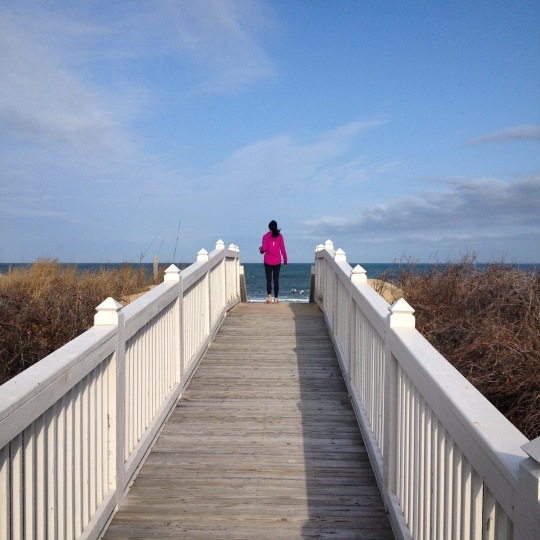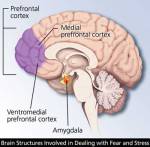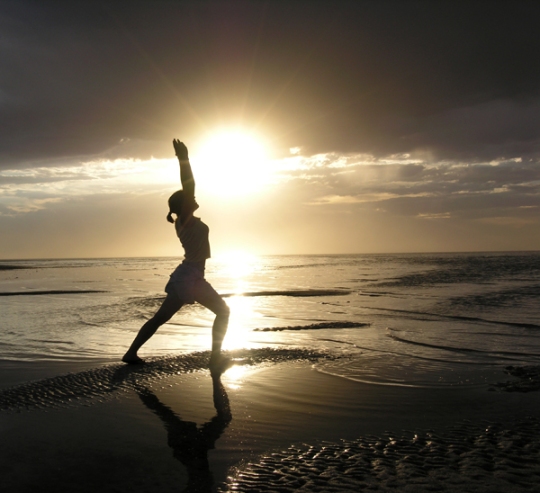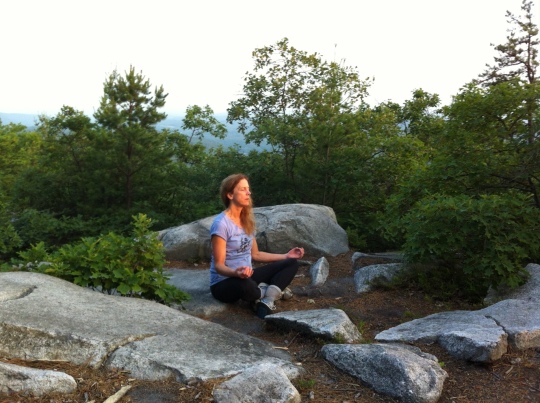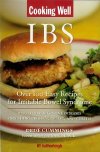Recently, on Goodreads, a reader wrote a very thorough review . . . It makes me think I should just do a book of all of “Dede’s Grey Boxes” from the Crohn’s book! What do you all think? A “how-to” from a patient who has kicked Crohn’s disease? A “saying no” to major medical institutions (like the Mayo Clinic) who advised me to start medication (Remicade/Humira, etc.) immediately and I didn’t and I beat the disease by following a naturopathic/holistic health plan that was outlined in our book . . . (just to be clear: Allopathic medicine saved my life by a combination of prednisone and bowel surgery of my small and large intestine (about 2 feet) to keep me alive…)
Check out the review & Happy Spring! Maybe I will work on this new book if it will help people!
~Dede
Living with Crohn’s & Colitis: A Comprehensive Naturopathic Guide for Complete Digestive Wellness
by Rebecca
Recommended for: People with Crohn’s, Colitis, IBD and their loved ones
Having just had a bad flare up of my Crohn’s, and a long and scary stay at the hospital, I’m now on a mission to read up more on current healing and overall wellness for people in my situation. This book was the only one amongst a sea of books that I had any interest in reading as a jumping off point. The combination of medical and personal account in this book is incredibly helpful. Hearing accounts of those who have “been there, done that, got better!” really is a spirit lifter for someone coming out of a bad flare and wanting to get on the right path.
The clinical information in this book is spot on and seems highly up to date. The biggest part of which is the proliferation of the idea that diet does matter to this disease. I was utterly dumbfounded during my hospital stay when I was given a menu of items I was allowed to eat (after being off food nearly a week) and it included so much junk. Though I didn’t thoroughly question my multiple doctors on their stance of diet in relation to Crohn’s, I got the impression most of them are operating under the “it doesn’t really matter what you eat” mentality. This blind spot in medicine, and not just related to Crohn’s, is a huge failing of our current system, and getting doctors to work with you on natural healing can be a challenge. Thankfully, books like this one are out there to help people start to see the interconnectedness of things like food, stress, supplements, along with pharmaceutical drugs and “modern” medicine. I have to give this book 5 stars for being detailed but understandable, informative, up to date accurate, and personally relate-able. The tips and tricks through the book are easy to understand and begin to incorporate in a healing plan for yourself. I recommend keeping paper and pen nearby to write down the names of various healing methods to try (like acupuncture and massage), as a reminder to look up that sort of thing in your area, and write down the names of supplements, foods and meals to try, etc.
My only complaint about this book is that Dede’s story and a lot of the helpful information is incredibly scattered throughout the book. We get chunks of things here and there between the related medical information. It was fine when reading through the first time, but I think the book would benefit from a few sections at the end that sort of combine the snippets scattered throughout into a more cohesive “summary” type section at the end for easier access when you want to use this as a reference instead. This is truly minor though, and since I can easily search the book on my Kindle it isn’t a huge deal to go back to re-read.
This book is a most excellent jumping off point for anyone wanting to get more information about Crohn’s and Colitis and a path to begin healing the whole body, not just covering up symptoms.
~~~
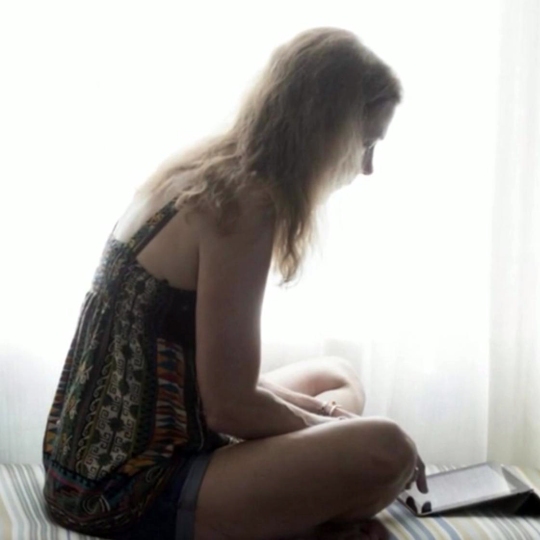
“In To Look Out From, Dede Cummings takes good advantage of the imaginative fluidity that poetry offers. Even her poems of memory and family are driven by curiosity and enlivened by quick maneuvers…
Source: To Look Out From, poems
I am symptom-free from severe Crohn’s disease since my surgery to remove a section of small and large bowel in 2006. Doctors at the Mayo Clinic and Dartmouth did not recommend my decision to go against their advice to take a cocktail of drug therapies for the rest of my life since the majority of patients relapse after surgery. They are nonetheless very pleased (and supportive!) with my naturopathic/holistic treatments that balance Western medicine tests and surgery with age-old herbal and natural remedies that have worked remarkably well.
Instead of taking the recommended monthly infusion of Remicade (which would costs thousands of dollars per year), I have remained in remission by following a strict diet (Paleo), having monthly acupuncture treatments, going to my naturopath, taking herbal and mineral supplements, doing yoga and meditation and exercising daily, etc.
This coming spring, I will celebrate my tenth anniversary on May 22, of healing from Crohn’s disease! Many of my readers know how much I struggled and how sick I was, back in 2006 when I was admitted to Dartmouth Hitchcock Medical Center with a life-threatening bowel obstruction.
Everyone is different, and each one of us has a unique microbiome that needs to be balanced not only on the gut level, but also in terms of diet and lifestyle, by taking supplements like probiotics and high-potency curcumin/turmeric, etc. (like I do) and working with a naturopathic doctor (ND) which is what our book recommends. Not everyone will be able to do this—some patients will have incredible results from taking the various class of drugs out there on the market today; other patients will want to embark on a journey to health that involves ancient practices of medicine (like acupuncture and Zen Shiatsu massage, Aureuvedic treatments, etc.) that requires a great deal of patience, and time to devote to changing ones life to accommodate the holistic approach I advocate.
With the seasons changing from winter to spring here in Vermont, I am filled with hope that other Crohn’s/colitis//IBS/IBD/Celiac patients who follow this blog will not be deterred from their own path toward health and wellness. It is important to have hope when dealing with an autoimmune disease.
This is the vicious cycle. When we feel pain from our physical debility, that pain amplifies our sense of hopelessness; the less hopeful we feel, the fewer endorphins and enkephalins and the more CCK we release. The more pain we experience due to these neurochemicals, the less able we are to feel hope.”
― Jerome Groopman, The Anatomy of Hope: How People Prevail in the Face of Illness
When you or your loved one was first diagnosed with IBD, you probably felt like your life and taking a sudden spiral downward. You may have found yourself in the state of utter confusion, a deep-seated feeling of loneliness and depression taking root in the very core of your being. This may sound dramatic, but too many sufferers of both Crohn’s disease and ulcerative colitis feel this way in response to their diagnosis. The good news is that the better informed you become about your newly diagnosed condition, the better off you will be in the long run.
One problem that many people with IBD know all too well, is that these diseases, especially Crohn’s disease, can reoccur. Although therapies can reduce signs and symptoms, often the hope for full remission is stymied by widely varying factors.
Treatment options often include hospitalizations, surgery, and medications, but they rarely include a holistic approach that incorporates acupuncture, a new diet (potentially wheat-and-dairy-free), stress reduction, psychotherapy, yoga and meditation, naturopathic medicine, and a special protocol in detoxification.
When the proper groundwork is set for healing, the treatments, lifestyle practices, and even pharmaceutical medications, are much more effective at reducing symptoms and promoting healing. Our bodies were meant to function as a whole, and treatment plans should always be directed at the whole body to achieve the desired effect of wellness.
For me, as a Crohn’s disease patient, I benefit so much from going to see my regular doctor (an M.D.), and my naturopath (and ND), as well as my IBD specialist at the clinic at Dartmouth. I hope that someday soon, all three will be able to work together seamlessly. Until that time, I have to be the instigator, and make sure that my medical records are sent to all three places, and I have to be very proactive to stay on top of my appointments, asking my questions, doing my own research, and creating my own support system. All of the specialists and doctors are very busy people (as most of us are), and it is imperative for those of us with IBD, or our caregivers, to be very motivated.
Sometimes it can feel overwhelming. But make a list of things to do:
- Walk every day—start small, and gradually add miles. . . . A walk on the beach, like my friend in the photo, really releases stress. Do a short yoga stretch before or after!
- Buy a new water bottle—I love my 22-ounce LifeFactory glass water bottle with the rubber exterior!), and take one step at a time.
- Find a recommended naturopath in your area.
- Make sure you have at least yearly appointments with all the doctors on your “team.”
- Embark on the new dietary guidelines in this book.
- Take a high-potency probiotic (I take 1 capsule daily, called VSL#3, that really seems to be helping by bowel movements), or one that is recommended by your team.
- Consider asking your MD or ND to do a complete blood work-up, and also to test your adrenal function.
- (Last, but not least,) Work with a naturopath, preferably, to balance the immune system to achieve homeostasis that is promoting wellness in your mind and body.
Happy Spring Detox and Motivation….. And Happy Almost Summer!
Greetings from Vermont. I am the co-author of Living With Crohn’s & Colitis: A Comprehensive Naturopathic Guide for Complete Digestive Wellness (with a nationally-known naturopath, Jessica Black, ND). Our book has helped so many people afflicted with Inflammatory Bowel Diseases, part of the growing auto-immune diseases that cause diarrhea, bloating, nausea, vomiting, and cramping. These inflammatory bowel diseases, and other auto-inmmune disease are on the rise exponentially across the world, especially in the developed countries where processed food is available.
Think about it: There are certain behaviors that cause body/mind stress: We address this in the book, but I want to tell you that I am a patient/survivor of a stress-induced flare-up in 2006 that almost killed me. On my 5 foot 8 frame, I weighed 117 pounds. I spent a month at Dartmouth Hitchcock Medical Center. I was 45 and very sick, with 3 children at home and a business to run.
Stress was the way I worked, and I was on autopilot without taking time for myself. That has all changed, and I have been in clinical remission for the last 7 years! Let me tell you more….
As many readers know, I went to the Mayo Clinic in Rochester, Minnesota this past May to have a complete second opinion. I spent two days of my weeklong stay, at the wonderful stress reduction clinic.
~
Here are some of my tips gained from my research, and how I try to keep my disease in remission:
STRESS
 A lot of us have low level stress. Most of us don’t live in the hyper-aware world, and we suffer the autopilot behaviors that contribute to what I call “the slow burn of stress response.” Our heart rate and blood pressure might be elevated, and our breathing and muscle tension is like this — shallow breathing and knots in muscles. There is an area at the base of the brain called the amygdala. This is the seat of our emotional reactions, or “flight of fight” response to stress. Many Americans live with this elevated, but low level elevation daily… a little bit of “Flight of Fight” stress is really okay, but not on autopilot.
A lot of us have low level stress. Most of us don’t live in the hyper-aware world, and we suffer the autopilot behaviors that contribute to what I call “the slow burn of stress response.” Our heart rate and blood pressure might be elevated, and our breathing and muscle tension is like this — shallow breathing and knots in muscles. There is an area at the base of the brain called the amygdala. This is the seat of our emotional reactions, or “flight of fight” response to stress. Many Americans live with this elevated, but low level elevation daily… a little bit of “Flight of Fight” stress is really okay, but not on autopilot.
Look at our brains — In our pre frontal cortex, there is an area responsible for relaxation, and it is not easy to stimulate and not an adrenal release, as per the amygdala part of the brain.
~
First we need to be aware of this pre frontal cortex We have to explore our own behaviors and habits, break out of autopilot, and participate in a personal practice. There are some things you can’t control, like weather or traffic jams; however there are some things we can control, and are important… An example from the workshop was if you have an overbearing mother (don’t worry, Mom, not YOU!), and how you need to take care of yourself first and use the excuse of health, and scale down. Awareness helps, and limit your exposure to stressful people and situations. It’s a process… keep boundaries in your mind, but “caring boundaries.”
Unhealthy responses to stress in our life are anger, etc. It is important to develop a healthy exercise routine, learn and use relaxation techniques (see below), and take care of yourself. This neural pathway gets easier and easier to tap into (see diagram at right). For example, my body knows and relaxes immediately when I walk into my home “yoga area” where I have a TV, and a carpet with a yoga mat. I use Rodney Yee’s DvD, “AM/PM Yoga,” and do the exercises every day… it gets easier and easier to tap into the relaxation part of my brain, and it is replenishing.
After a stressful day:
- Call a friend
- Laughter
- Read a book
- Knit
- Walk
- Walk the dog
- Ride a horse
- Volunteer at a soup kitchen
- Play the piano
- Do some gardening
In order to break out of autopilot, do a few things on this list on a regular basis.
~
Benefits: Concentration, Problem solving, Sleep…
We need to be participants: This involves “letting go of the wheel,” loosening your grip, and takes time and experimentation.
In the wonderful workshop, our instructor gave the analogy of flying on an airplane, and how you put the oxygen mask first, then help the child.
Talk therapy is another way to help relinquish the autopilot lifestyle… A regular monthly session with a trained, recommended therapist will do wonders for helping to care for yourself, establish boundaries, and feel safe.
Evaluate your stressors and prioritize your time, as you move forward in the break from autopilot.
Give yourself permission eg., “Be kind to yourself and ask for help.”
Often we don’t think about our career as a choice made for healthy reason, and it might be time to reevaluate what we do for work.
It is important to spend time with friends, develop hobbies…. Hanging out with people who make me laugh is a goal. A hospital study involved a control for two groups with the same malady: One group watched funny movies every day, and got out of the hospital faster.
It’s a process, and it is important to practice positive self talk.
—-
Start a simple practice of Tai chi and chi gong
Walk around with a gentle smile on your face and try to share it with strangers—you use less muscles and tension when you are not frowning, which can contribute to an overall sense of well-being and a way to focus on releasing the internal stress caused by being on autopilot…
I have found this “small smile” technique that is practiced by Amit Soud, MD, the head of the Eastern Medicine Section of the Mayo Clinic to be essential as a way to lessen internal stress.
~
TAI CHI AND CHI GONG: These ancient exercises are easy and relaxing, often available in small towns across the United States. For example:
We breathe with about 40% of our lungs. If we can learn to take slow diaphragmatic breaths, we can effortlessly lesson our stress levels. These exercises are the foundation and essential for relaxed breathing.
A simple exercise I learned at the Mayo Clinic:
Take in a slow deep breath,
and fill your lungs so even your belly sticks out;
hold for a couple of seconds;
pretend you have a lit candle and exhale
so that the candle flickers.
Note to reader: it might take 8 weeks or so to start seeing results.
I am leaving today until Thursday …. It’s for a good reason: Mayo Clinic for a second opinion on just how “severe” my Rx is. I already love them — the GI nurse calked to schedule me for stress management & relaxation class, also Tai Chi, Chi Gong (begin the video at 0.26), and a sleep workshop!
In addition, I will be in the hospital Monday for tests, too. I plan on recording my meeting with Dr. Tremaine, so I can really focus on what he says… there is a study that says patients only retain about 30% of what the doctor tells him when they deliver a diagnosis… fear, anxiety, etc., can cause this…. I guess that should be pretty obvious, but I am going to be prepared.
This is a good thing! Preventative and integrative medicine, as it should be . . . more to come.
Thanks for all your support…
I have used mediation and mindfulness steadily since my bowel resection six years ago, and I have made a daily practice of morning yoga and mediation.
When I sit at the end of my yoga session (I use the gentle Rodney Yee DvD, “A.M. Yoga,” I let Rodney’s soothing voice guide me into a place where my breath is quiet, my mind quiets (that can take a while with me!), and my shoulders and ears and limbs are relaxed (look at statues of sitting Buddhas, and you will notice the elongated ears, the fingers in the lotus position, the downcast eyes…).
I chant “Om,” before and after I sit, and I have a visualization that I let pass through my body from my head down through my spine, and out my lower back—it is a ball of white light. While this luminescent ball moves down my spine, I have a mantra I chant over and over that goes like this: “White light healing inflammation gone.” It is amazing to me how grounded and refreshed I feel after each morning session.
I have recently become influenced by the work of Jon Kabat-Zinn—the founder and former director of the Stress Reduction Clinic at the University of Massachusetts Medical Center. He also travels across the country teaching workshops on stress reduction and mindfulness.
This video is nice… and a good introduction.
 I also like this book, as a good starting point for introducing mindfulness and meditation into your daily lives… As I prepare to go to the Mayo Clinic next week, I will reread this book, and meditate… Just 10 minutes a day for starters, and I hope you will join me. I’d love to hear what others have to say about introducing mindfulness into their lives, and what the do and recommend.
I also like this book, as a good starting point for introducing mindfulness and meditation into your daily lives… As I prepare to go to the Mayo Clinic next week, I will reread this book, and meditate… Just 10 minutes a day for starters, and I hope you will join me. I’d love to hear what others have to say about introducing mindfulness into their lives, and what the do and recommend.
Namaste
This post was also published by Len Saunders in Your Health Journal, today! I am honored to be a part of this healthy outlook website, and glad they used my meditation tip for #198!
Before tackling the gluten-free diet, let’s get to know our culprit.
Gluten is a specific type of protein, but one you won’t find in meat or eggs. Instead gluten is found in wheat, rye, and barley. Going gluten-free means avoiding these grains. A gluten-free diet is essential for most people with gluten allergies or celiac disease, a condition which causes intestinal damage when gluten is eaten.
Going Off Wheat ~ Dede’s Story (from Living With Crohn’s & Colitis)
People always ask me why I cannot eat wheat and I don’t have a clear answer. I remember my naturopath asking me to give up wheat when I was really having digestive issues—mostly constipation and blockages—and I was horrified. “I love pizza and bagels the most,” I pleaded with her. She demurred and suggested I give up wheat for three days to see if that helped my frequent bouts of arthritis due to the long-term flares of Crohn’s disease that had ravaged my joints.
After three days, I was ecstatic, I had more energy, and I felt better all over, especially in my elbows and knees which were frequently arthritic. Four years have now passed, and I switched to the ancient wheat grain, Spelt, for my occasional wheat-fixes (though I typically use rice flour for pastas and pizza crusts). Spelt — HIGH GLUTEN CONTENT — looks very similar to wheat (just ask my seventeen-year-old son who often samples my Spelt concoctions, like pizza dough and scones, and doesn’t notice any difference from the same made with wheat!)
Spelt actually contains more protein than wheat, and since I have given up red meat, I do like getting extra proteinin my diet. In addition, the protein is easier to digest, though there is actually more gluten in Spelt, which makes it an unsuitable grain for those with celiac disease. Here is an awesome gluten-free bread company (their pizza is SO good!) . . .
As far as oats are concerned, I have found this grain to be easier to digest than most other whole grains. NOTE: I only use pure oats, not commercial oats, which are often processed with wheat, and if have celiac disease you MUST stay away from any wheat contamination, according to my research!
According to Diane Lamb, a nutrition and food specialist at the University of Vermont, writing in her excellent column in the Brattleboro Reformer,
“Breakfast can make your day!…A healthy breakfast should energize you, satisfy your hunger and provide beneficial nutrients—carbohydrates, protein, vitamins, minerals, and a small amount of fat…A bowl of cereal (hot or cold) that has some dietary fiber with low-fat milk or yogurt, fruit, and even a few nuts provides a lot more nutrients than an empty calorie food like that sweet roll, or donut. . . . In addition to lowering blood cholesterol, oats (oatmeal) can help control blood sugar and insulin sensitivity. Whole grains including oatmeal are digested more slowly than refined grains. This slower digestion leads to a gradual, steady supply of blood sugar which can keep hunger in check.”
I rely heavily on routine in my diet and lifestyle choices. I always read labels carefully, and I try to cook with McCann’s Steel Cut oats, perhaps as a nod to my Irish heritage, but more importantly, to get the purest grain without any addition of refined sugars, added salt, and flavors. Sometimes the fewer ingredients on the label, the happier I am and more apt to purchase!
~MORE TO COME EVERY FEW DAYS!~
—Dede Cummings
Research from the Mayo Clinic, ThirdAge & WebMD • photography @creativecommons.
I’ve been asked to teach a gluten-free cooking class at our local food coop. I am quite frankly honored to do this, but I realized I needed to do some homework, so I could help inform the participants, a few of whom are children (accompanied by a parent) with Celiac disease and/or Irritable Bowel Syndrome.
Since my cookbook, Cooking Well: IBS, came out last year, I have gotten a few emails and comments from readers about how it has helped them stop having IBS flare-ups all together. This makes me so happy, as an author, but more importantly, as an educator and speaker who wants to help people stay away from getting full-blown Inflammatory Bowel Disease, which includes Crohn’s disease and ulcerative colitis.
Here is my “word salad”
(no pun intended, or yes, well a little pun!) that I made for my talk (with more to come, as I develop the new book):
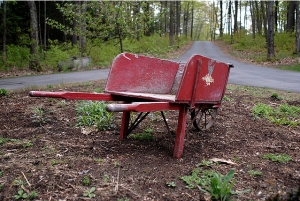 The reason I write today, is because around 30 years ago, I met an old woman who was born in Germany in the late 1800s. She was in her herb garden in Western Mass., and I was a “back-to-the-lander” (child of the 1960s . . . ), and interested in growing my own herbs. “Irma” was around 95 years old then, and still going strong. She had bright blue eyes, and white hair held in a bun at the nape of her neck. She had one of those classic flowered aprons on as she bent over her wheelbarrow talking to herself in German. Since German was my minor as a comp-lit major, I of course approached her and asked her what she was growing, etc. We began a nice conversation and eventual/occasional discussion on growing herbs and the health benefits.
The reason I write today, is because around 30 years ago, I met an old woman who was born in Germany in the late 1800s. She was in her herb garden in Western Mass., and I was a “back-to-the-lander” (child of the 1960s . . . ), and interested in growing my own herbs. “Irma” was around 95 years old then, and still going strong. She had bright blue eyes, and white hair held in a bun at the nape of her neck. She had one of those classic flowered aprons on as she bent over her wheelbarrow talking to herself in German. Since German was my minor as a comp-lit major, I of course approached her and asked her what she was growing, etc. We began a nice conversation and eventual/occasional discussion on growing herbs and the health benefits.

